site search
online catalog
NEAR EXCELLENT AMES 1852 US NAVY OFFICER’S SWORD AND SCABBARD

Hover to zoom


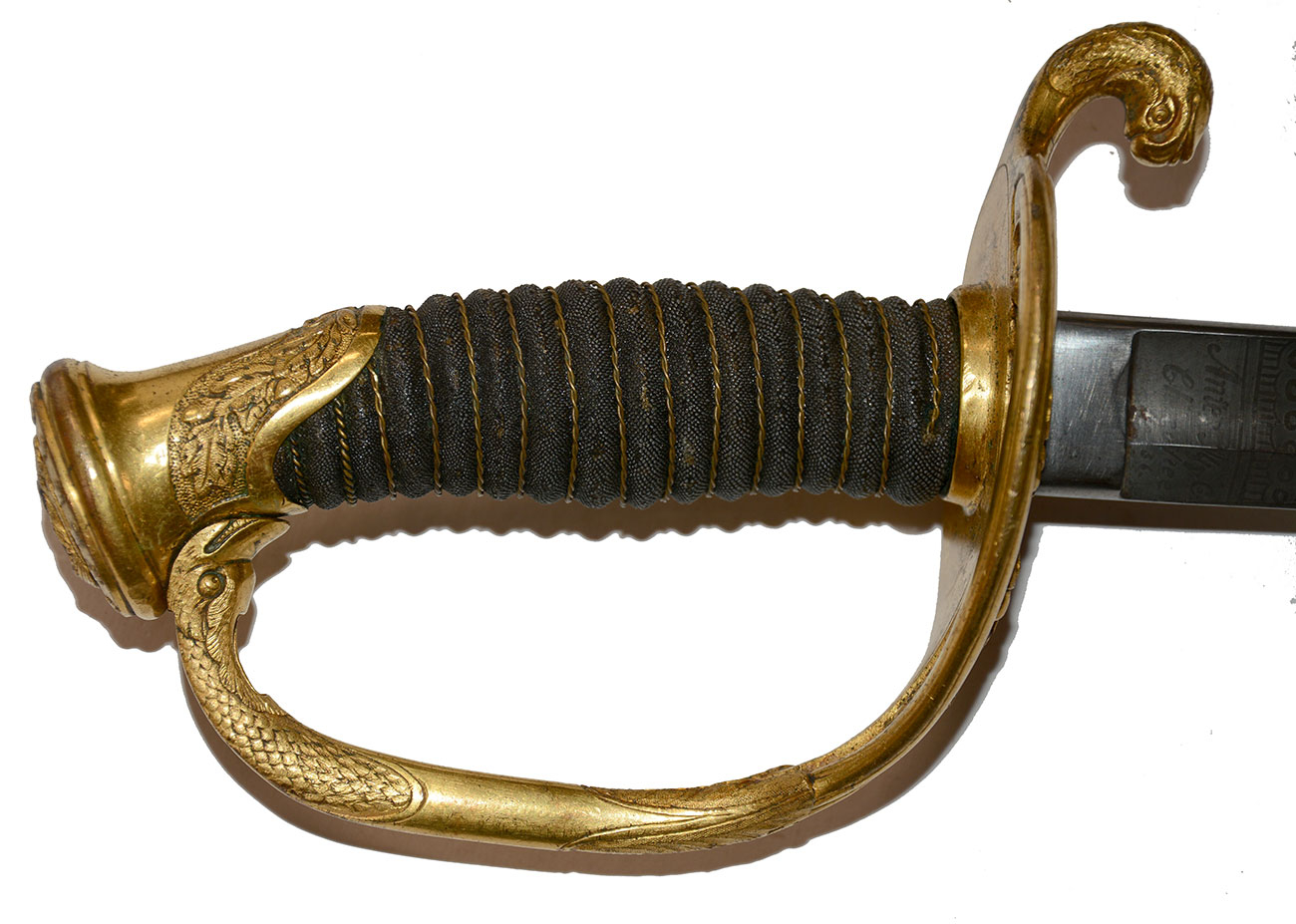
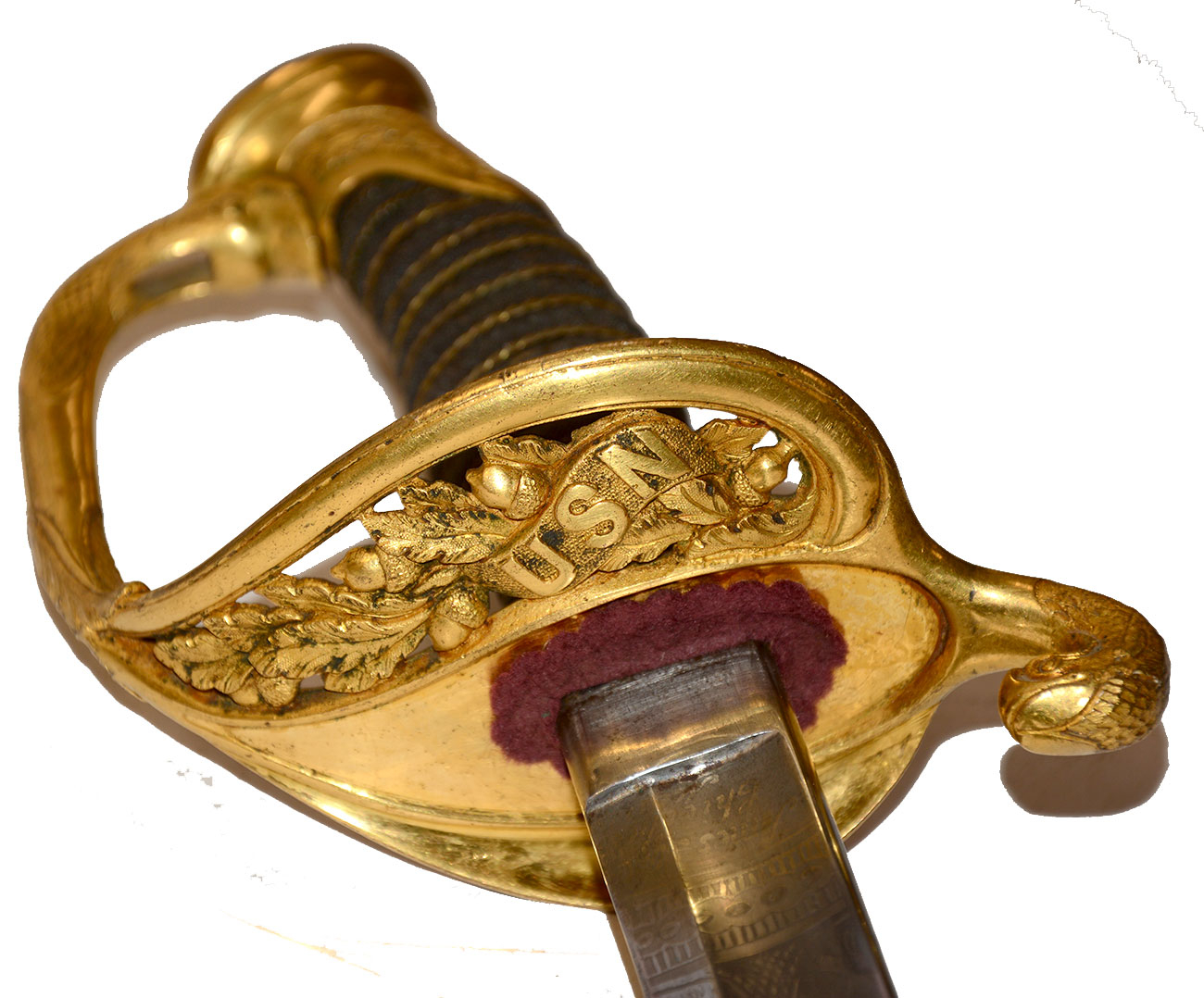
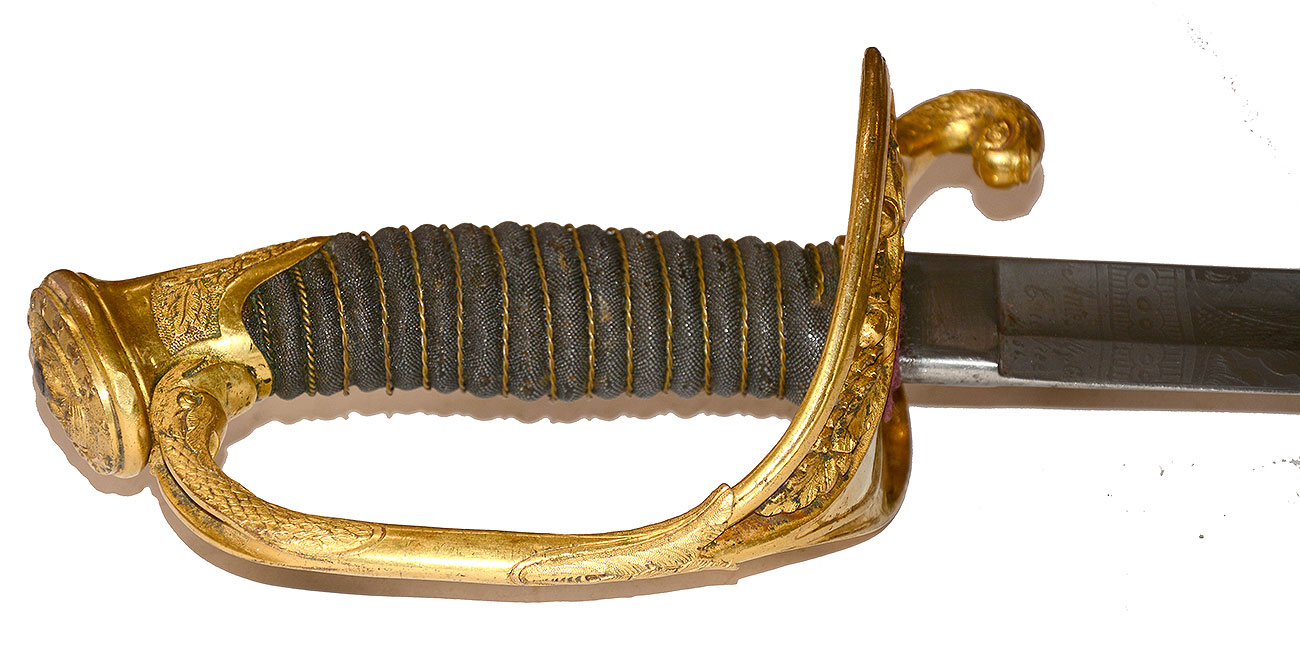
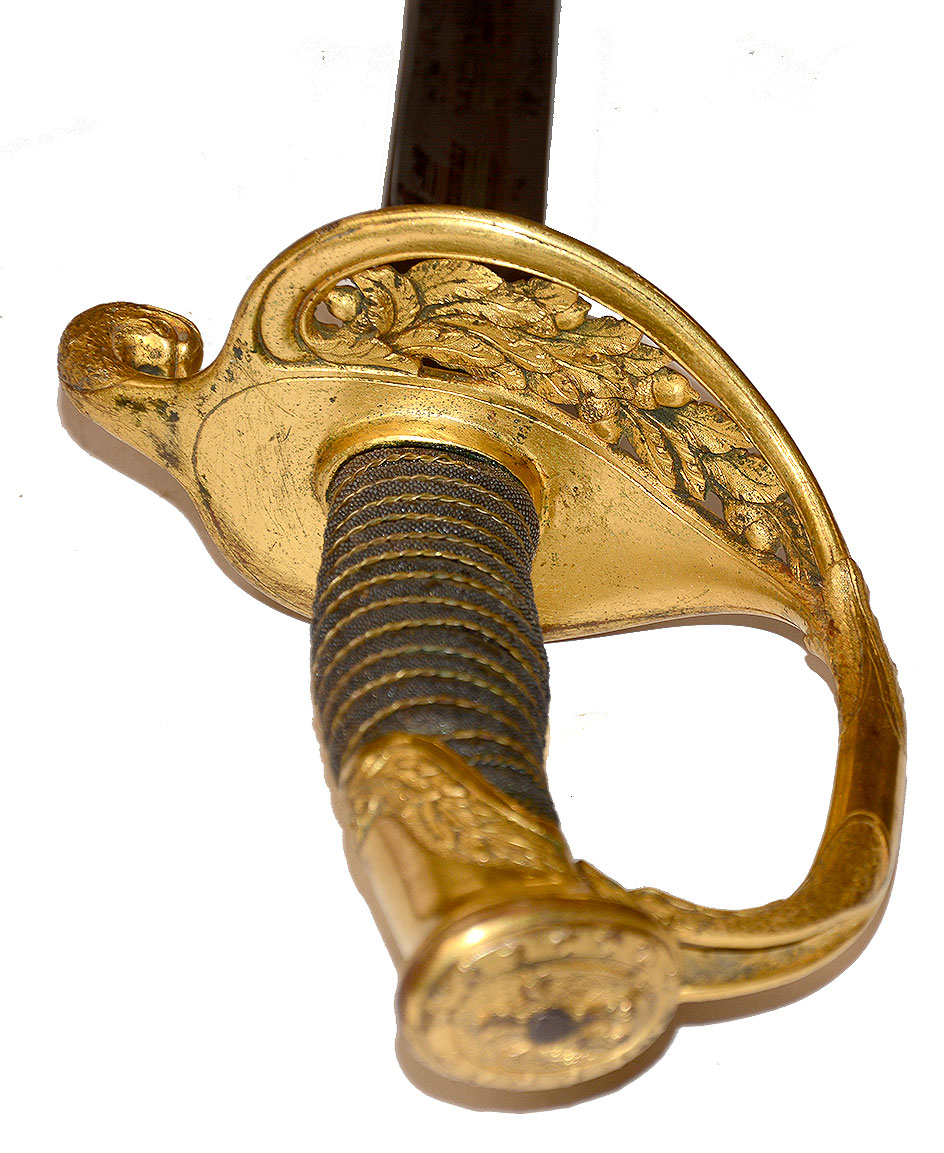
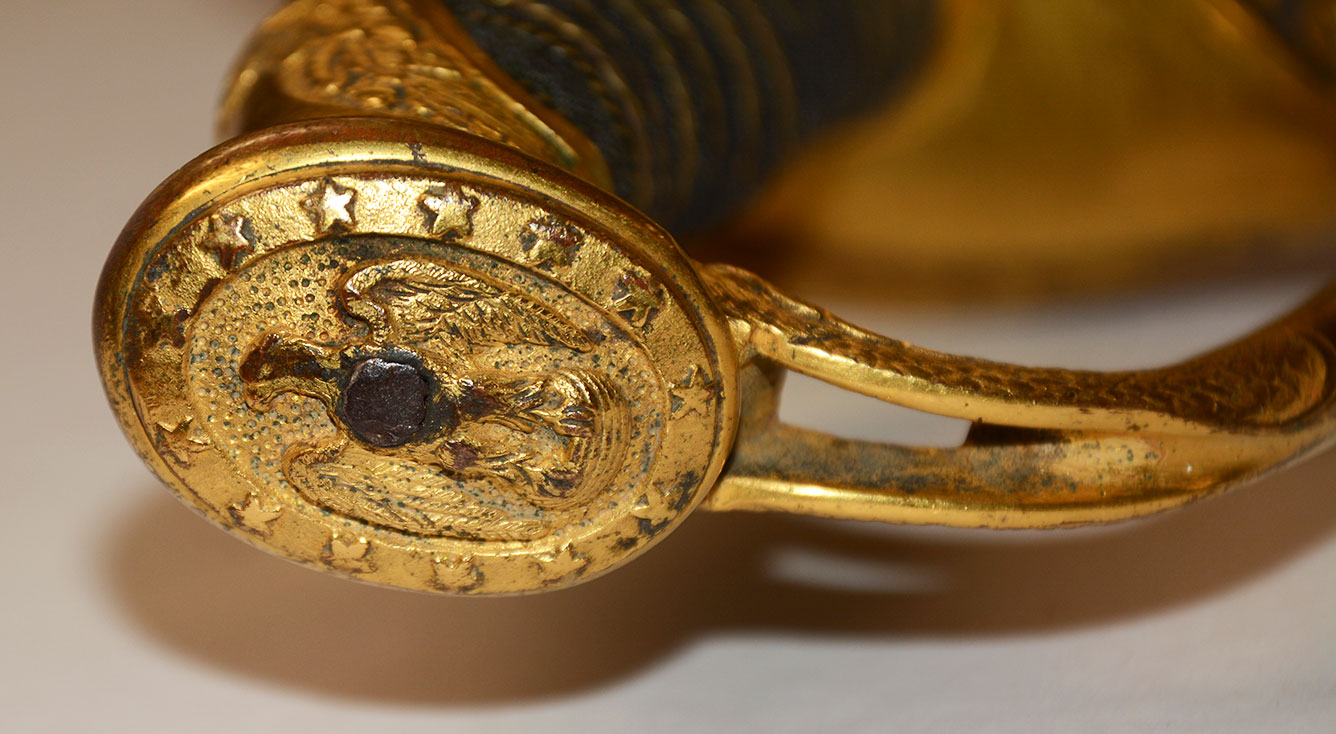
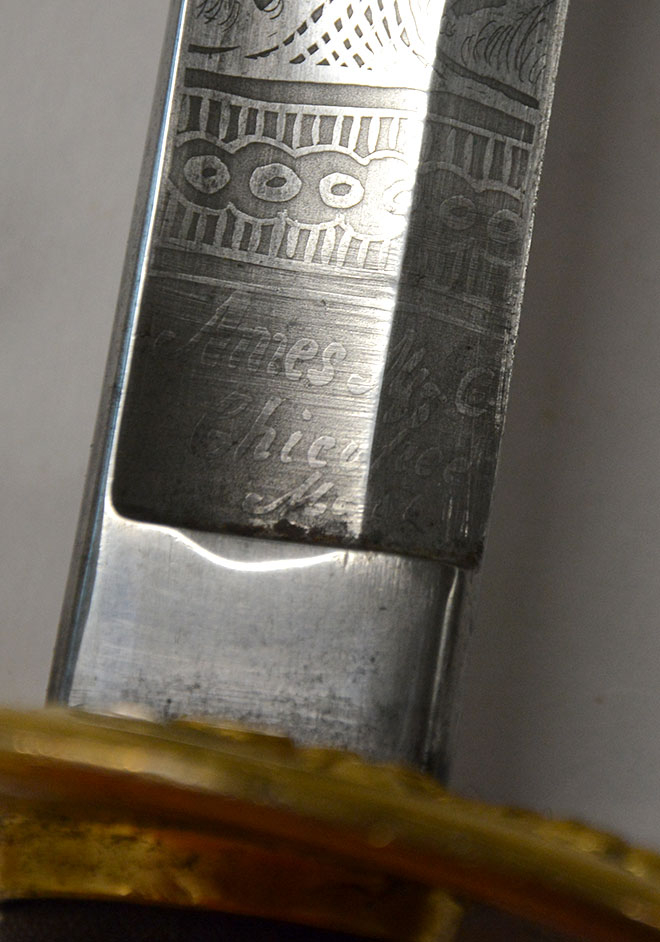
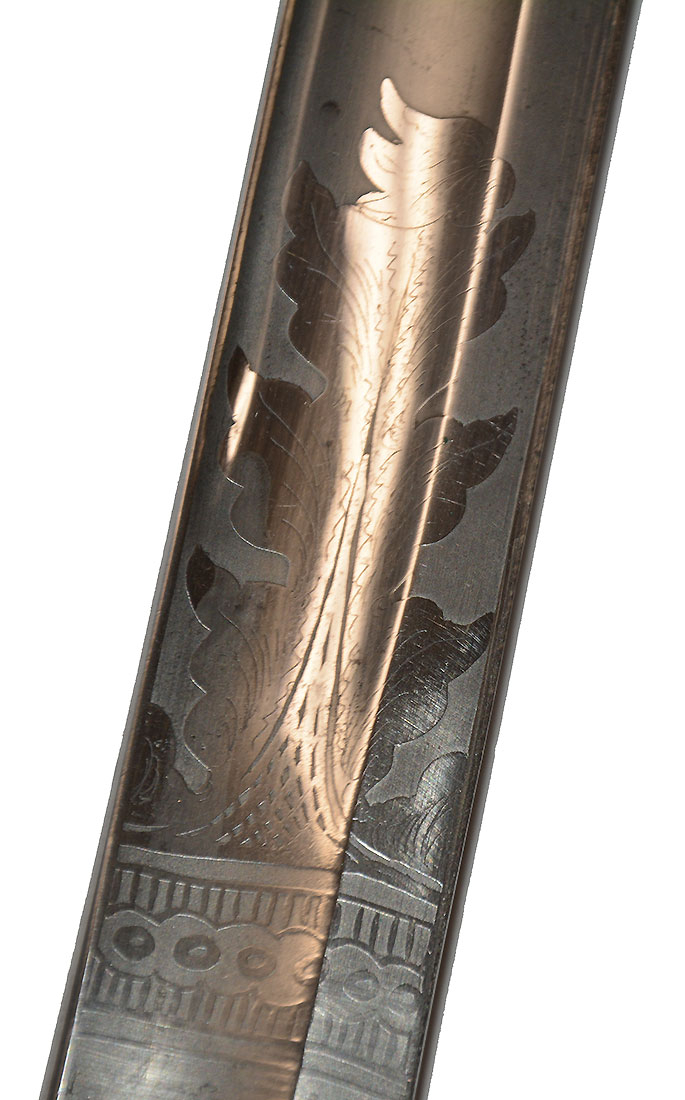
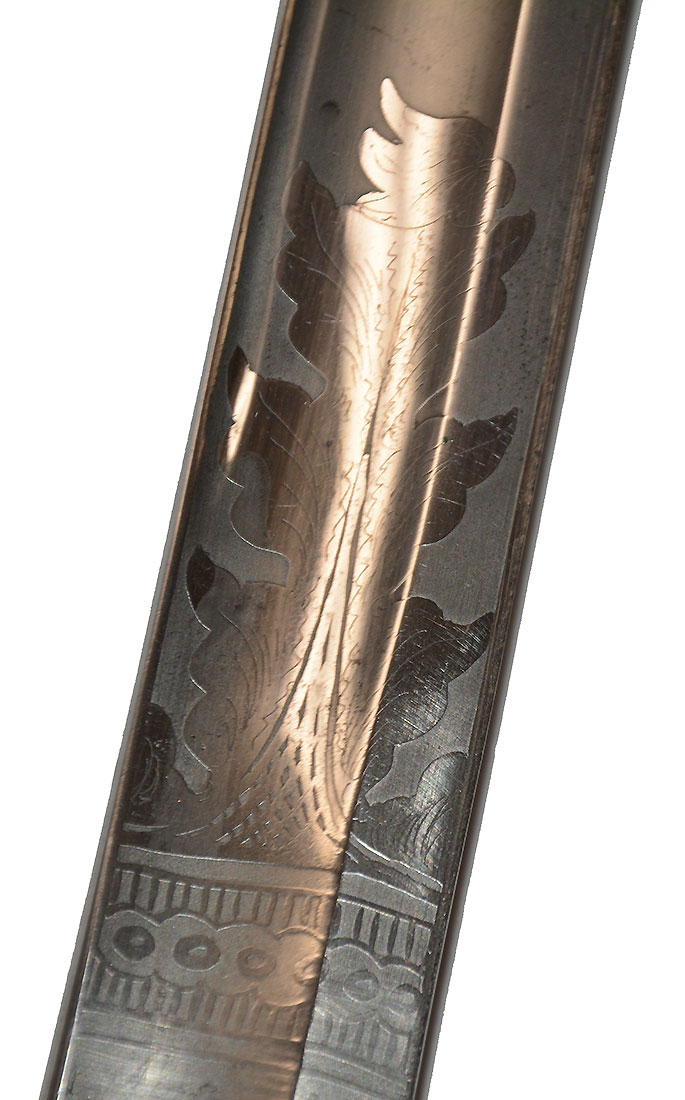
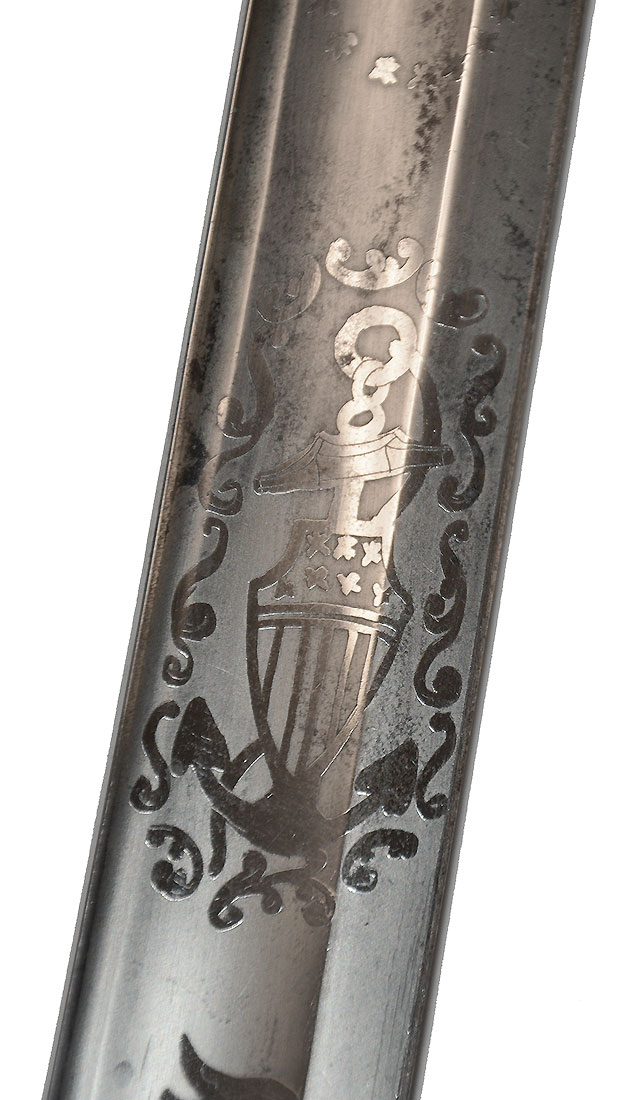

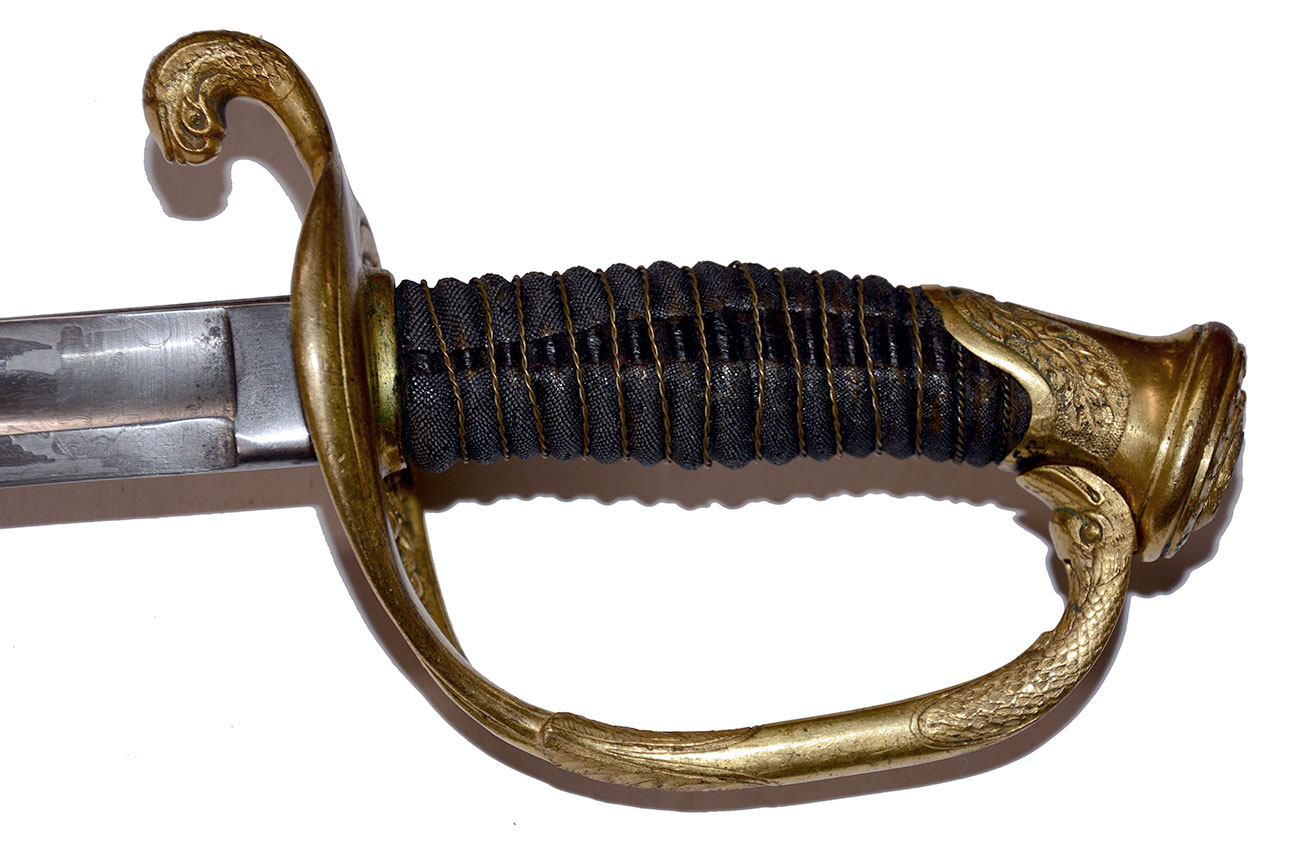
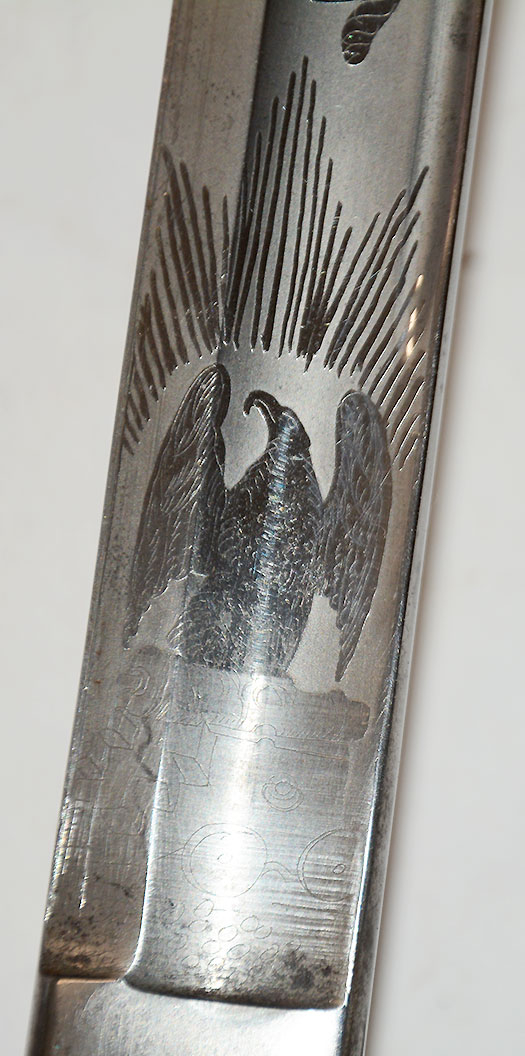
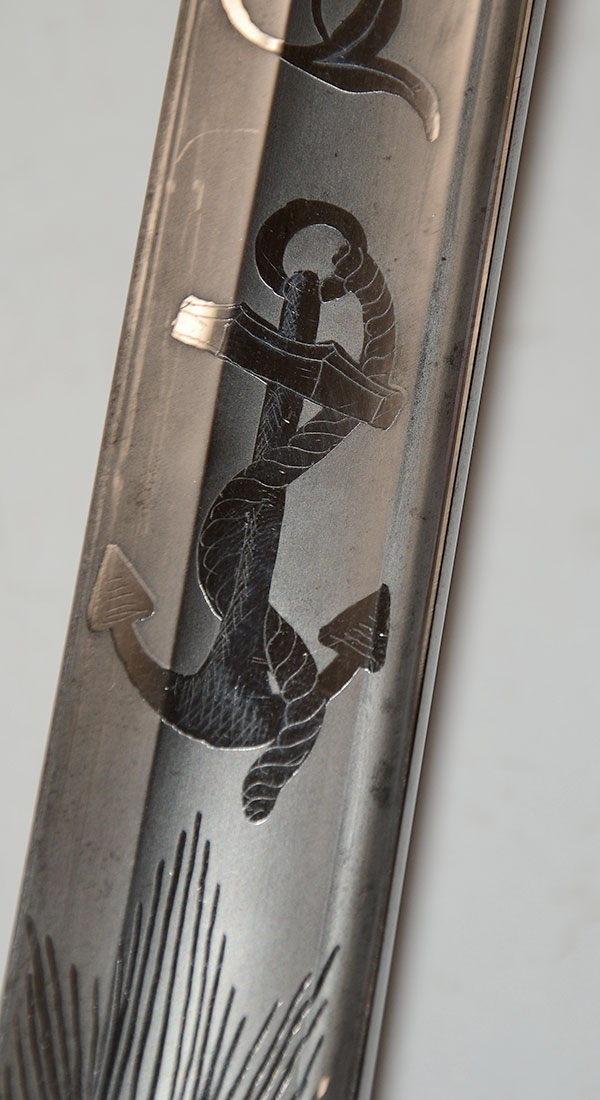
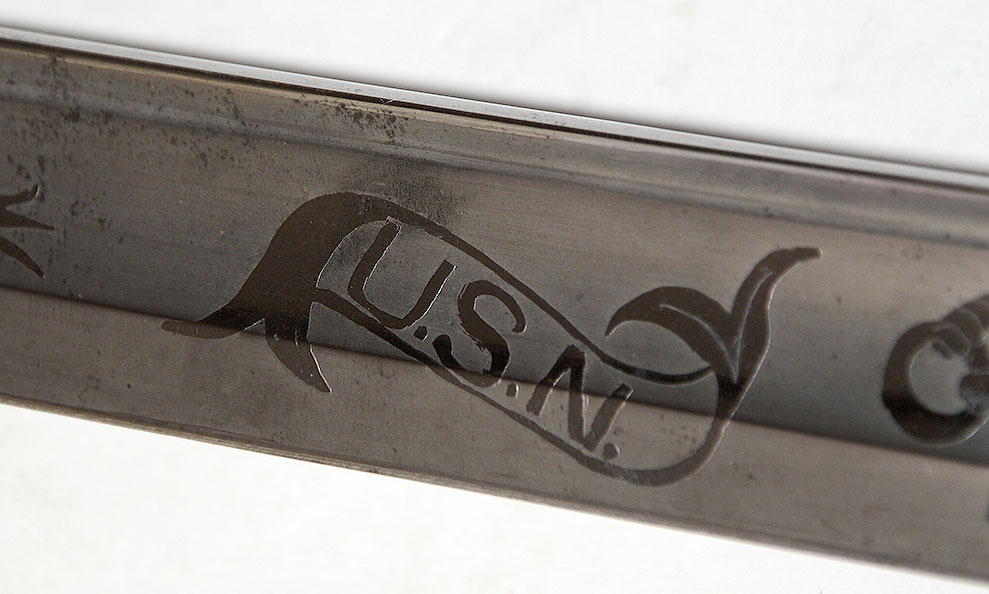



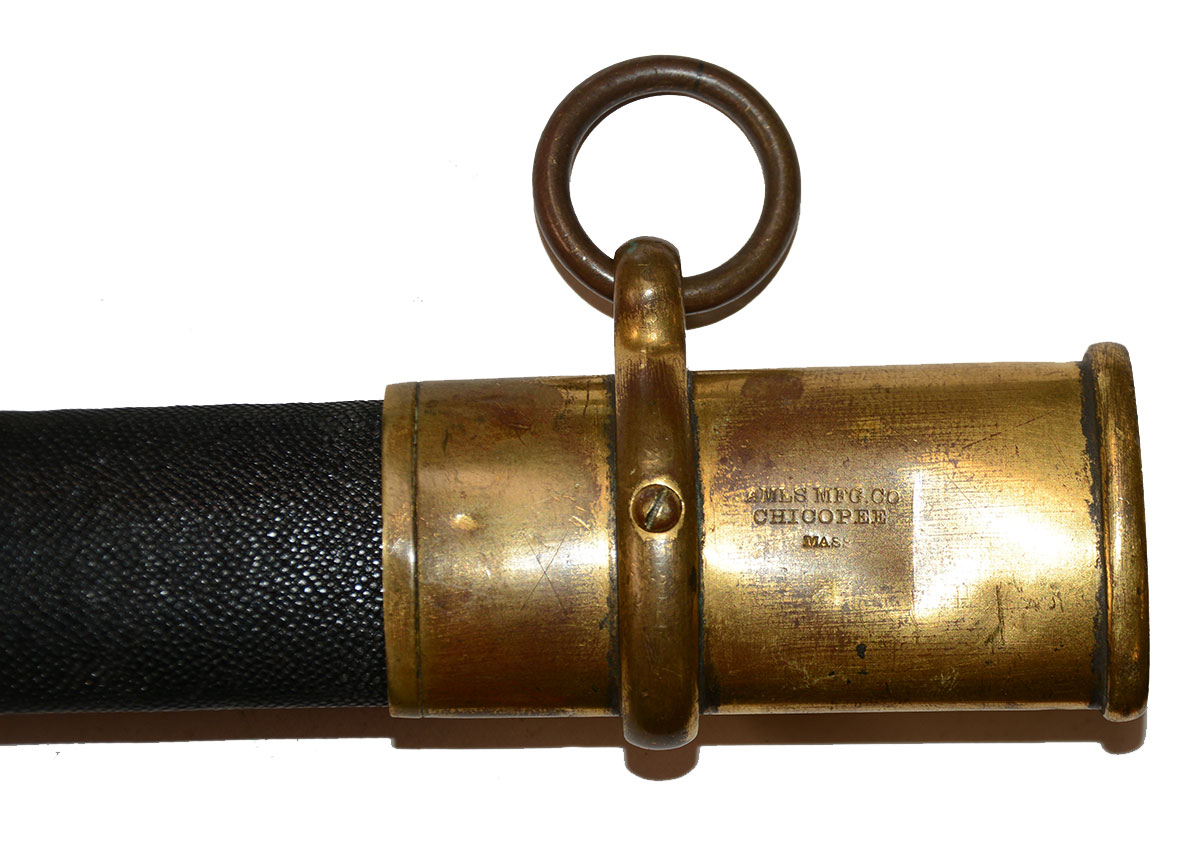

$2,395.00
Quantity Available: 1
Item Code: 881-23
This is a great example of the Civil War US Model 1852 officer’s sword made by Ames. (The pattern continued in use, but after the Civil War used a scaled down blade, hilt and mounts.) The gilt brass hilt has detailed, high quality, deeply sculpted – cast and chased- regulation decorative motifs in superior condition- retaining 80-90 percent original gilt finish; the scabbard and mounts are good; and the blade has vivid etching, bright metal, good edge and point. The pommel cap shows an eagle and stars, with just slight dark stains and a little roughness to the peen of the blade tang, with bright acorn and oakleaf branches along the pommel face. The knucklebow is in the form of a sea serpent at the upper end with open mouth and very distinct eye, who reappears as the quillon above the counterguard. The lower end of the knucklebow transitions into a budding sprout at the beginning of the counterguard with its detailed floral openwork of oak leaves and acorns surmounted with a raised “USN” on a banner scroll with stippled ground. The grip has the regulation, gray rayskin wrap and twisted brass wire binding, though we note a piece was inserted to mask the frequently encountered shrinkage gap in the rayskin and a length of the wire was replaced. The rayskin, however, shows only minor wear.
The blade pad is present on the underside of the guard. The scabbard is a dark rayskin with brass mounts that are plain on the reverse, but cast in relief on the obverse with ring bands in the form of knotted ropes or cables, and another sea serpent curving around the drag to act as the drag blade, with the stamped AMES MFG CO/ CHICOPEE/MASS marking on the reverse of the upper mount. The color surface of the scabbard body is good. The mounts natural losses to the gilt from handling and mostly a patinaed brass. The drag has a few inconsequential shallow dings.
The etched blade retains strong frosting and vivid motifs. The reverse has the American eagle at bottom with sun rays overhead, a fouled anchor with “USN” in a foliate ribbon above, and a a knotted naval rope/cable extending through and above a branch with leaves and acorns. The obverse is etched at bottom with the Ames firm address, with an Arabesque latticework over it that extends upward in a point forming the spine of some broad leaves, with leaves overhead, followed by an anchor with superimposed U.S. shield, surrounded by an abstract wreath formed of loose foliate S and C-scrolls, followed by a loose an oval of stars, and lastly a stand of pikes and spears, a tall one at center floating a pennant showing some stripes and “USN.” On both sides the etched panels on both sides terminate in multiple, straight, flamelike points, with the blade above being smooth, bright metal and the blade having good edge and point.
The navy has been an unsung service in the Civil War that has gained more attention in the collecting field in recent years. They expanded dramatically during the war taking in officers and men in the volunteer service to augment the regulars in manning the fleets in international waters, maintaining the blockade, opening key rivers like the Mississippi, and both supporting and taking part in coastal and river landings. This is a very good example of the regulation officer’s sword. [sr] [ph:L]
~~~~~~~~~~~~~~~~~~~~~~~~~~~~~~~~~~~
THIS ITEM, AS WITH ALL OTHER ITEMS AVAILABLE ON OUR WEB SITE,
MAY BE PURCHASED THROUGH OUR LAYAWAY PROGRAM.
CLICK HERE FOR OUR POLICIES AND TERMS.
THANK YOU!
Inquire About NEAR EXCELLENT AMES 1852 US NAVY OFFICER’S SWORD AND SCABBARD
Most Popular
Historical Firearms Stolen From The National Civil War Museum In Harrisburg, Pa »
Theft From Gravesite Of Gen. John Reynolds »
Selection Of Unframed Prints By Don Troiani »
Fine Condition Brass Infantry Bugle Insignia »
British Imported, Confederate Used Bayonet »
Scarce New Model 1865 Sharps Still In Percussion Near Factory New »
featured item
MODEL 1851 SWORD BELT PLATE FROM HARPERS FERRY ON A GREAT DISPLAY CARD
This sword belt plate, a very good example of an early pick-up, is mounted on a great old card typical of early relic displays labeled in brown ink, “Officers Belt Plate / battlefield of Harpers Ferry / West Virginia.” The plate has an untouched,… (1202-196). Learn More »


